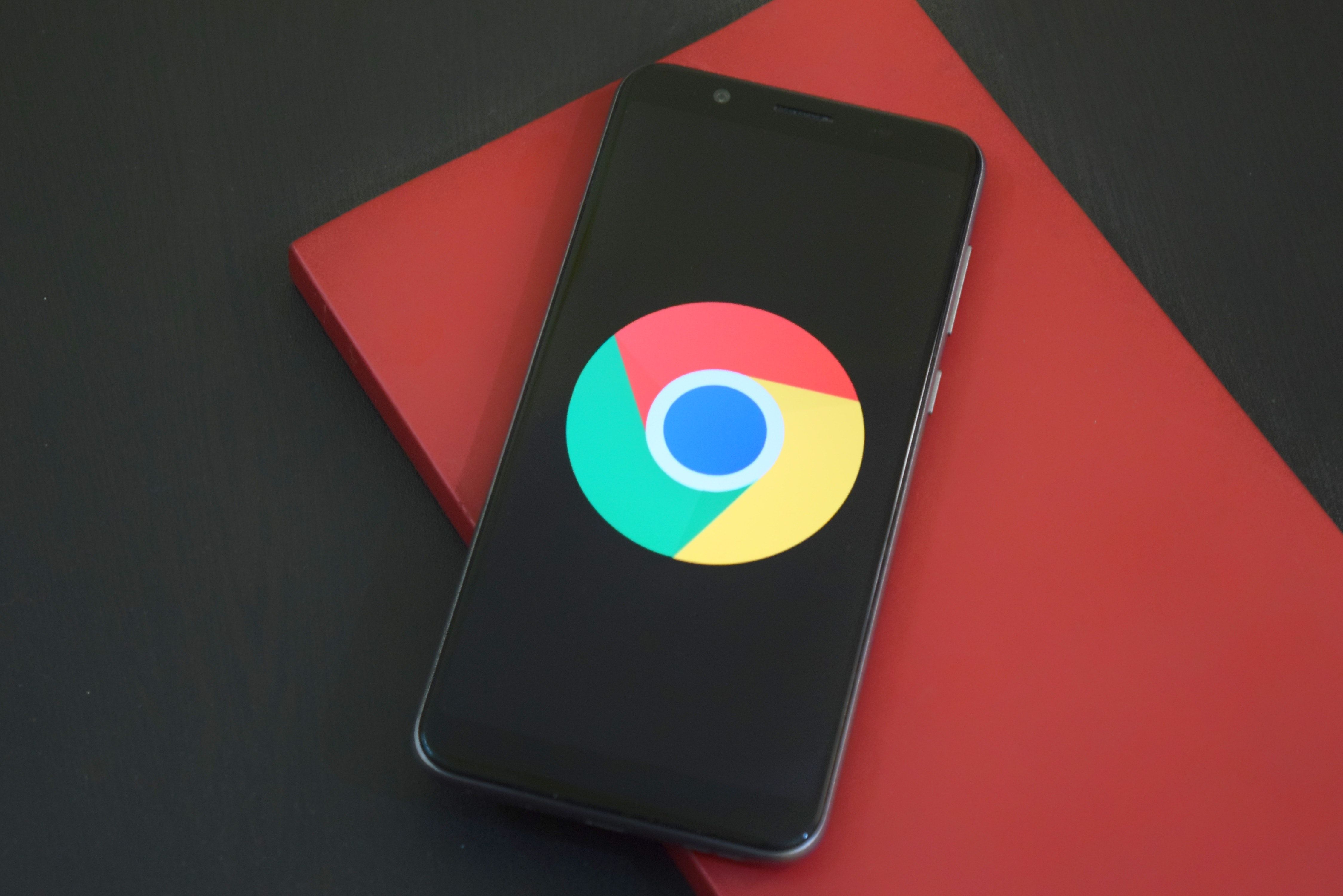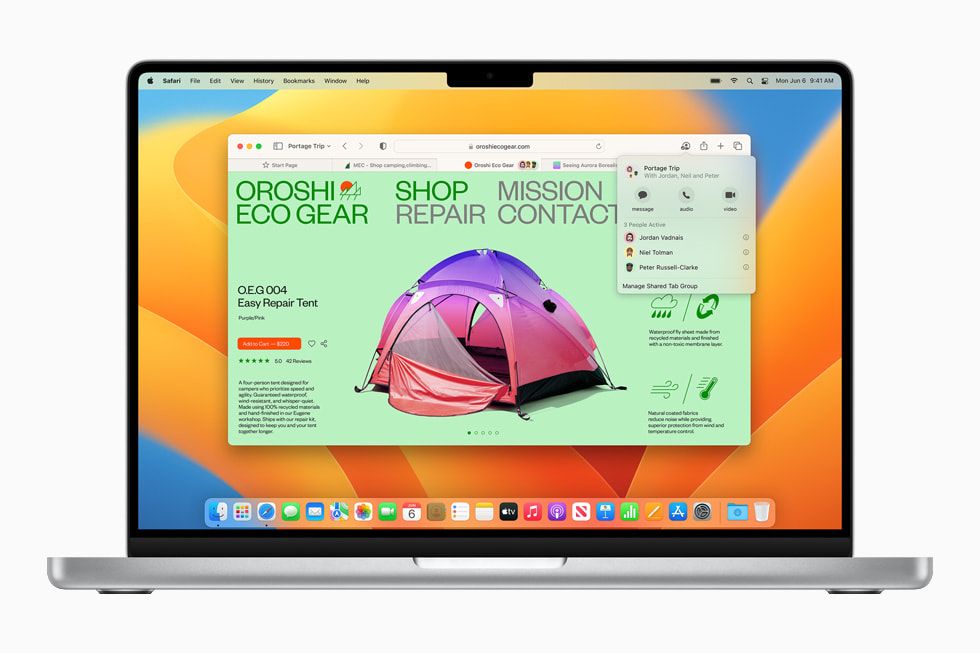In the wake of Apple’s WWDC conference, I’m struck by a particular feature that the company announced: shared Tab Groups. Past all the new hardware, the revival of lock screen widgets, Apple’s new love with customization — beyond all of that, this one dumb little feature sticks out to me as something with the potential to be really impactful in a thousand tiny and unanticipated ways. With how minor but potentially far-reaching it feels, I can’t understand how Google didn’t think of it first for Chrome, and I hope we get it soon.
For those that didn’t tune in, at its WWDC keynote today, Apple announced a bunch of software features for upcoming iPhone, iPad, and Mac updates — pretty much the whole point of the yearly event. One of the features the company touched on a few times during the presentation was a cross-platform tool that allows folks to share groups of tabs between people for simultaneous access, with Google Docs-style indicators for who is looking at what. Easy shortcuts let you message, call, or video chat with the folk you're sharing the group with for deeper collaboration. It’s trivially simple, as the best features usually are.
It’s so straightforward and specific that it’s hard to think of as disruptive, but the potential use cases seem staggering. Relatively obviously, it could be handy when working from home, sharing a set of tabs with supplementary information in a group before a presentation or while working together on a project, with everyone having access to all the same information together. But that’s the tip of the iceberg. Imagine how handy it could be for coordinating a group trip somewhere, selecting flights and hotels and activities on a single shared browser. It sounds like tab history could be shared with the feature too, and it could be used for other avenues of research or any instance where you’d need members of a team to be on the same page — literally.
The utility expands; Educators sharing a set of tabs with students as they either study from home or work together in class; new roommates selecting furniture at Ikea; partners researching a big purchase together — a house, a car, a new refrigerator. Combine this with some killer PWAs (Apple’s big blind spot), and the potential applications explode. You could have a D&D party sharing character sheets together as the DM displays a map, organize supplemental materials for a remote town meeting together with the meeting itself, you could even put together a full-team work environment right inside a browser, so long as the tools they all need can be shoved into a tab.
This little feature, which was mentioned a handful of times across the iPad, iPhone, and Mac in Apple’s announcement, sounds like it could be quietly revolutionary in how we use the web together. And while using it in tandem with things like PWAs imposes some engineering challenges (depending on how you want them to be used), it seems like precisely a feature that Google would want to add to Chrome.
"This feature is a nearly obvious combination of Googly things, but Apple did it first."
The collaborative comparison to Google Docs is obvious, simply in terms of how it works, with similar indicators for who is looking at what. And Chrome’s whole schtick is its cross-platform utility, synchronizing all your bookmarks, browsing history, passwords, settings, and lots more between devices. This feature is a nearly obvious combination of Googly things, but Apple did it first.
There are Chrome extensions that can plug the gap, but they don’t work quite the same — or, at least, none of the ones I’ve found do. While you can blast your friends with a collection of tabs, there’s no real-time collaboration. You can share your screen through any number of different methods, but that’s not the same either.
The impetus on Apple’s part to create a tool like this is clearly tied to its incredible efforts to integrate all its different platforms together into one massive set of ecosystem-based tools — Continuity, as Apple calls it. To date, it’s just been something I’ve quietly envied. In the Google and Android camp, there’s an unfortunate disparity of platforms, where customers that opt to use Windows or a Mac as their computing device simply can’t get the same level of platform and feature integration. The Android companion experience is better on a Chromebook, but that’s not a workflow that’s for everyone, and even there, it feels like Google is merely playing catch up. But that’s a limitation that doesn’t apply; Google already has a deep platform advantage to implement a tool like this. Chrome is everywhere, from Apple’s platforms to Microsoft’s, iOS to Android. It’s the most popular browser in the world.
The feature's annoucement during WWDC.
It’s the same sort of collaboration applied to navigating the web, and it could easily be brought back full circle. A feature like this could be integrated into Google Workspace, not for monetization, but for even greater productivity enhancements, plugging into Docs and Drive and Slides to offer added functionality, or even just bolting services into it — Google does love its sidebars.
I am far from an expert on the subject of PWAs, and I know that certain PWA requirements like local storage are almost guaranteed to impose a challenge for certain applications, but this sort of feature could only be improved by using the web in more powerful and varied ways, as PWAs offer. Again, I’m not a developer, but it seems like an avenue where new utility could be embraced if there’s a way to either deliver the “same” PWA experience to multiple users simultaneously or introduce new tools or APIs that allow for some form of shared PWA experience. It’s also a key way that Google can differentiate here, given how deeply the company has embraced PWAs and how much Apple has done to fight them.
In my business, we sometimes joke about software features, saying “Google did it first, but Apple did it better.” (That's not always true, but it often is.) Shared Tab Groups is one instance where I think Google could take Apple’s idea and refine it into something really amazing.


